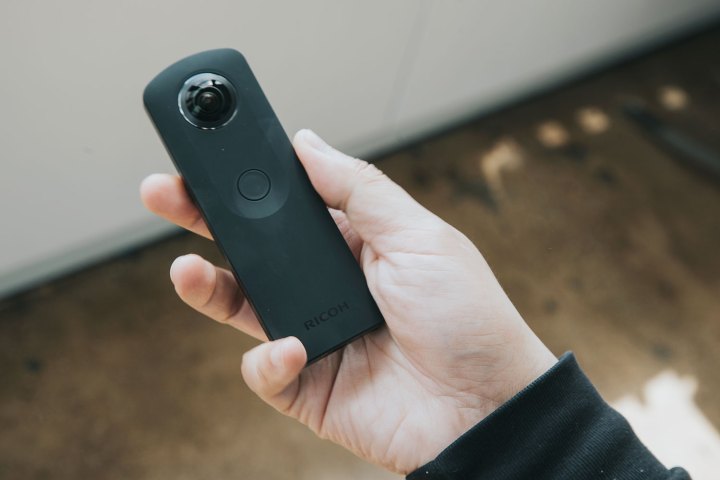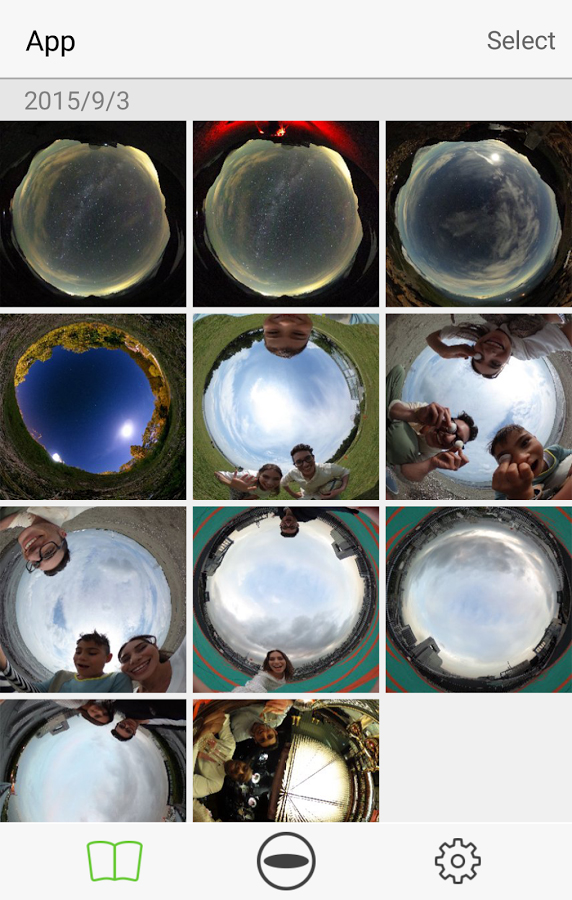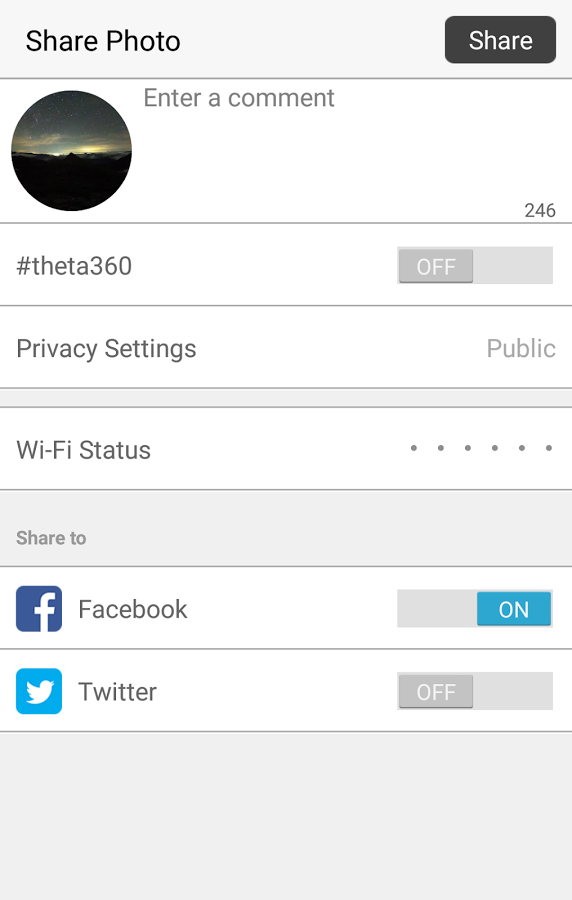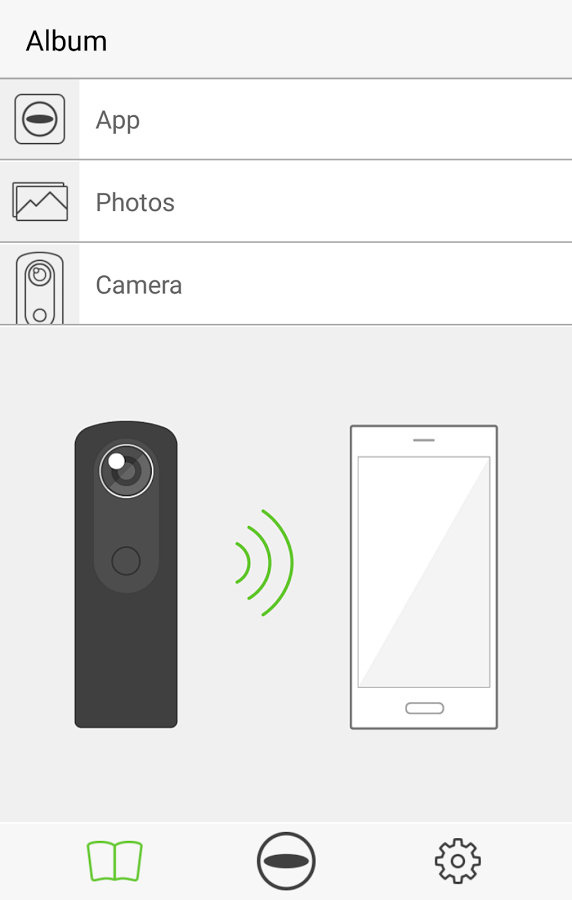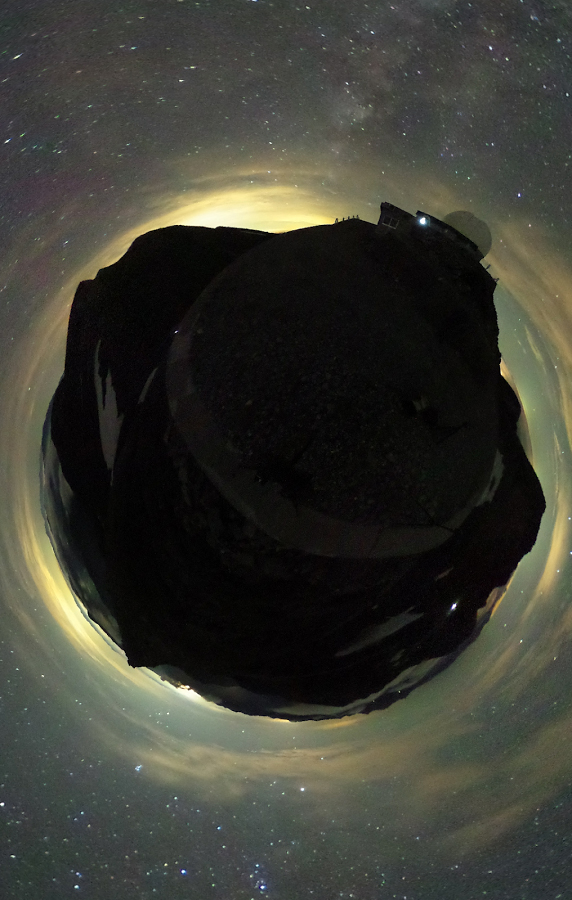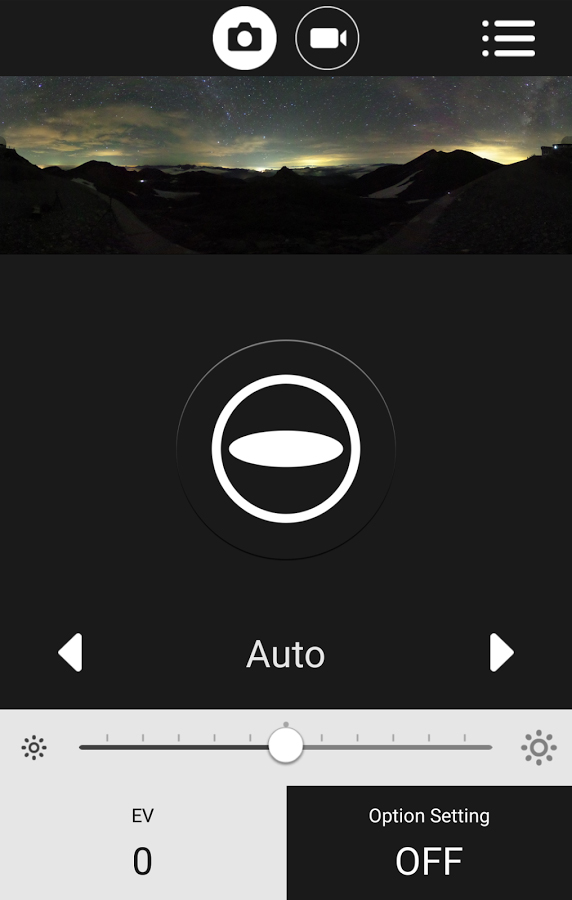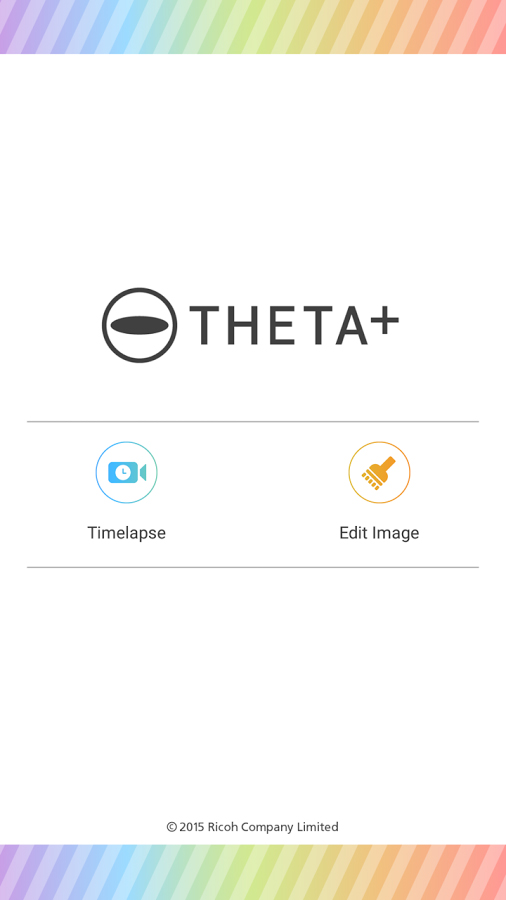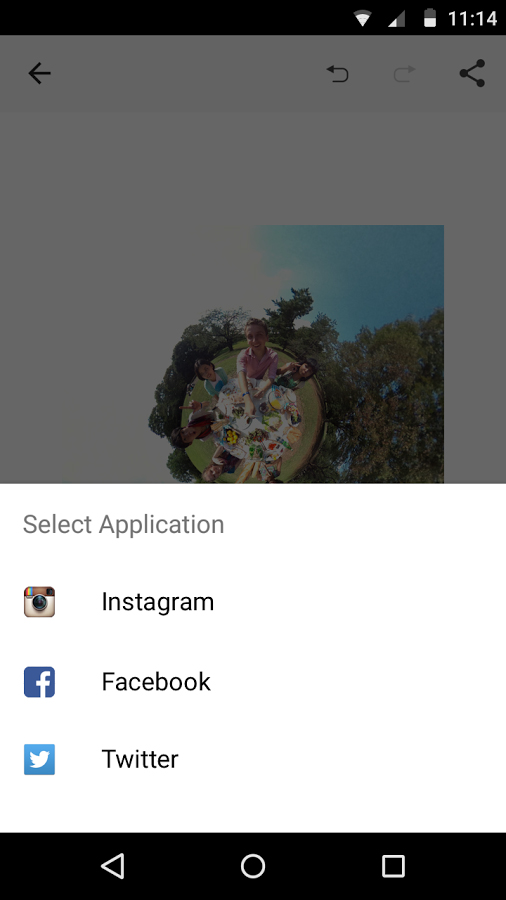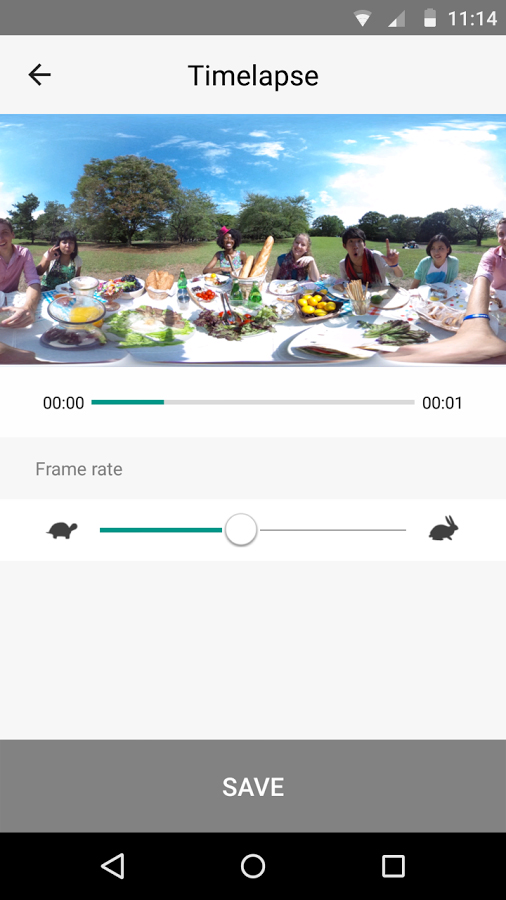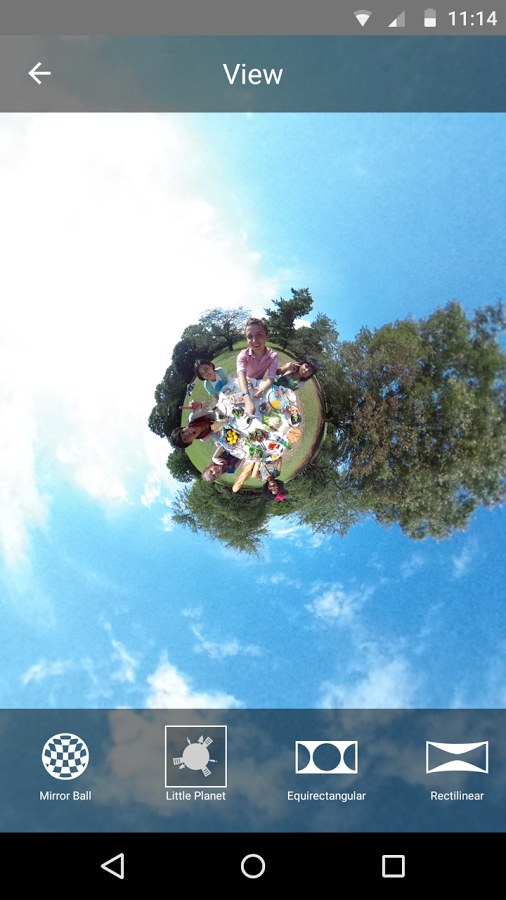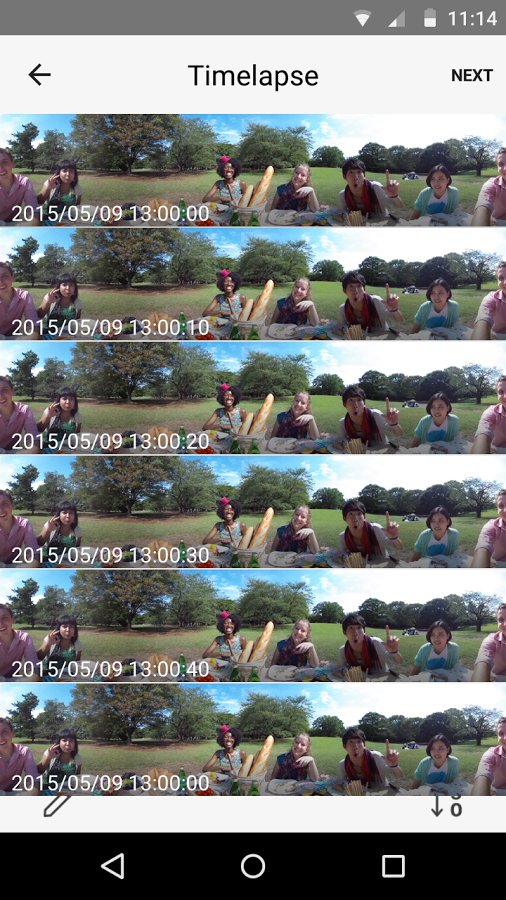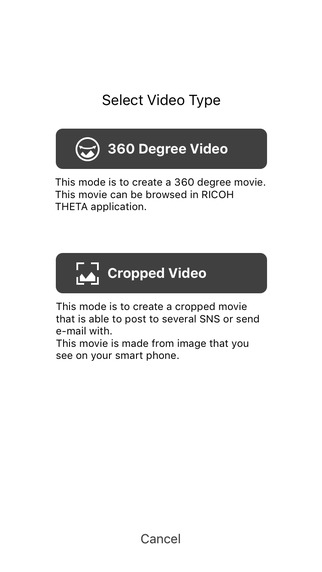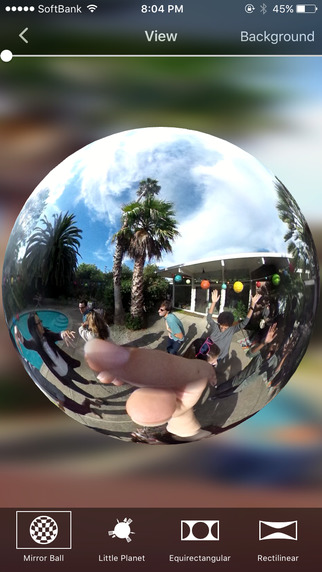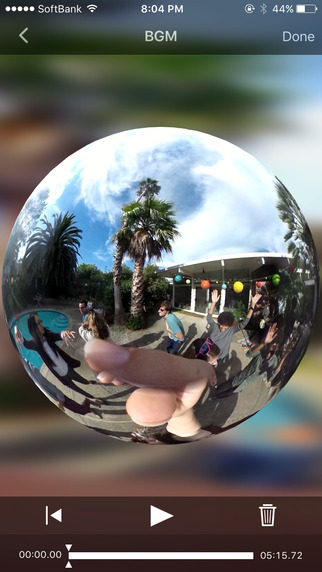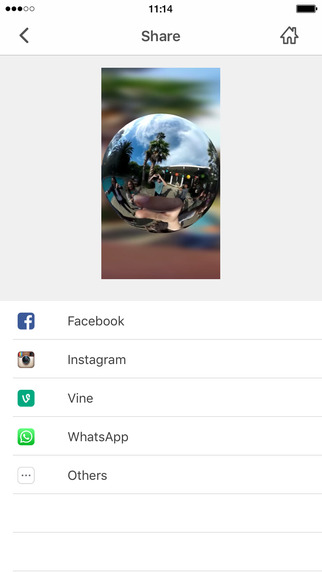
- Easiest 360 cam to use
- Good hand-held, portable design
- Works with Google Street View app
- Live-streaming capability
- So-so video resolution
- Limited storage
- Few apps available
All of a sudden, 360-degree content is the rage – or, at least, that’s what YouTube, Facebook, and a bunch of camera makers would like you to think. These cameras can shoot a spherical (or nearly spherical) panoramic image – in one shot – and are being driven to the forefront by the growth in virtual reality. Ricoh has been making its Theta-series of 360-degree cameras for some time, but its new Theta S is the most refined yet. Image resolution has increased, and it now supports Full HD (1,920 x 1,080 pixels) video capture. Despite its simplicity and ease of use, there are still some early-gen shortcomings. But, for a consumer gadget, it’s the most fun we’ve had from such a camera.
Features and design
Jim Malcolm, president of Ricoh in the Americas, told Digital Trends that for a camera like this to win consumers, it has to be easy to use, and it doesn’t get simpler than the Theta S. Imagine holding a TV remote control in your hand. That’s essentially what it feels like in your hand, and it even looks like one too. Measuring 1.7-inches wide, 5.1-inches tall, and 1-inch deep, the Theta S is not any larger than a smartphone and it fits comfortably in most clothing pockets.
Along one side are buttons for power, wireless, and photo/video (shooting mode). Turning on the wireless lets you pair it with the Theta mobile apps for iOS or Android; leave it off to save power. The Theta S can shoot 14-megapixel photos or Full HD videos, and pressing the photo/video button switches between the two.
The other physical control is the shutter button. Pressing it once will snap a 360-degree photo or start recording video; to stop, just press it again. Again, that’s as easy as it gets. (The camera offers a few more functions through the app, which we will discuss later.) There’s no LCD, but there are two status lights indicate what the camera is doing and what mode it’s in, respectively.
At the bottom is a Micro USB port for charging and data transfer to a computer, Micro HDMI port for mirroring content on a display, and tripod mount. At the top are the built-in microphone and speaker (for the beeps it makes).
The Theta S is Ricoh’s fourth version of the Theta-series, but it’s really a new beginning.
The main feature is the two cameras, one on either side. They each have an f/2 aperture lens, and a 12-megapixel 1/2.3-inch sensor (equivalent to a basic pocket camera). When you press the shutter button, the two cameras simultaneously shoot the 360-degree image or video (180 degrees from each camera, which are then stitched in-camera). The internal 8GB battery can store up to 1,600 photos at 5,376 x 2,688 (or 9,000 if you scale it down to 2,048 x 1,024), or up to 65 minutes (total) for video; there is no way to expand storage. We wish Ricoh had opted for higher-capacity storage; the files are large, particularly video, and you can quickly run out of room if you’re shooting all day.
The Theta S is Ricoh’s fourth version of the Theta-series, but it’s really a new beginning. With the previous Theta cameras, Ricoh was testing the waters – to see if there might be a consumer demand. With the 360 camera market growing (thanks to the push from virtual reality) and support from the industry (Facebook, YouTube, and Google Street View are some of the major services that support content created with the Theta), the Theta S is Ricoh’s real attempt to own this space. Compared to the previous Theta M15, which is still for sale, the Theta S has two larger-sensor cameras and improved photo and video capture, while retaining the ease of use.
The battery life is rated for 260 photos.
What’s included
Besides the camera, Ricoh includes a soft case, Micro USB cable, and printed quick-start guides. Software can be downloaded from the Theta website and iTunes App Store or Google Play.
Performance and use
At its simplest, the Theta S is a no-brainer to use. Turn it on, pick a shooting mode, and press the shutter button. Although you are shooting blindly, it’s capturing a 360-degree panorama, so you’re getting nearly everything in one shot (there is no single-camera mode, so you can’t use it as a “regular” camera, but you can crop the image in post-editing). The camera is quick and responsive, but it can get hot if it’s left on for a long period of time. There’s no wrong way to hold the camera, however, it’s best keep it upright; otherwise it affects how the image rotates when you view it. One thing to note is that while the Theta S captures a fully spherical view, the part of the image where the camera would be in your hand may look a little weird.
Panorama cameras like this have been touted as the evolution of the action camera. It makes sense: Like action cams, the Theta S has a fisheye lens and similar specs, like a 1/2.3-inch sensor, except there are two of them. For so-called action shots, 360-degree videos add a whole new experience level; as you’re snowboarding down a slope, you could pan to the back and watch the other snowboarders follow you. The Theta S is also great for travel: Imagine not having to worry about what part of Times Square to frame in your shot, since you’re capturing everything. It’s an interesting way to remember the places you’ve been.
As a camera, the Theta S delivers image quality that’s on par with a good point-and-shoot or quality action cam. Colors are accurate, although bright light washes out details. When you zoom in, you’ll start to lose sharpness and things get murky, with visible noise. We’re not surprised considering the sensor (although an improvement over the previous Theta), but image quality is better than what we got out of the Kodak SP360 (non-4K version). Low-light shots were much better than we expected. There’s clearly noise, but it’s usable when viewed in small sizes.
Video quality is along the same lines. It’s okay, but it’s a 1,920 x 960 at 29-frames-per-second resolution that’s stretched across the two lenses, which attribute for the lower quality. Nothing looks particularly sharp, but colors hold up well – better than the SP360 and motion is relatively smooth. If you view it on a phone, it should look fine. Since there’s no image stabilization, it is bouncy if you’re moving with the camera.
Improved specs lets the Theta S take better photos, but video could be better.
If you pair the Theta S with the companion
We doubt most users would play with the advanced settings, but the exposure compensation is useful for brightening or darkening a scene. Users familiar with these settings can fine-tune the shot (we’ve seen some really nice photos on the Theta online gallery) and set it on a tripod to get the steadiest, sharpest images possible, but it takes work.
The pairing process is straightforward: The camera becomes an access point, with its own SSID. Find it in the Wi-Fi menu, enter the password (this is located at the bottom of the camera, but it’s also the string of numbers in the SSID name), launch the app, and you’re in business.
There is one irritating about
Ricoh has two additional apps, one for editing photos (Theta+) and another for videos (Theta+ Video). The Theta+ app (Android | iOS) lets you create time-lapses from interval photos, apply filters, crop an image so that it’s easier to share as a flat, 2D photo, change the 360-degree view, apply stickers, and share to social media or the Theta gallery. The video app (iOS) ( has a similar approach: You can trim, add music, apply a filter, change the 360-degree view, and save and share. Like the basic app, these two are easy to use. Ricoh could have incorporated these features into a single app, but we think this helps preserve their approach of making the camera simple to operate.
Unfortunately, Ricoh doesn’t have any editing software for computers, and third-party photo-editing software can’t properly process and preserve the 360-degree content.
Thanks to Ricoh’s open software development kit, third-party developers can utilize the Theta S in their apps. For example, one developer created an app that shoots high-dynamic range (
Learning how to use the camera is intuitive, but should you need some guidance, Ricoh has excellent online resources at the Theta website that are easy to understand.
Viewing and sharing
For personal viewing, content created with the Theta S can be viewed on a mobile device or desktop computer, but the process is more streamlined on the mobile end because of the app integration. But you can’t view the content while they are still on the camera; you will need to transfer them to your mobile device first. This isn’t an issue unless it’s videos, which require more transfer time and can be very large files — 1GB or more if it’s a longer video. This eats up your phone’s storage.
Unless you’re sharing content immediately, we prefer the computer method. It’s requires slightly more work, but it isn’t difficult. After you attach the camera to the computer via USB, you can find it as a storage device (Windows) or use Image Capture on a Mac (the Theta S doesn’t pop up as a hard drive), and then copy the files to your computer. We like this process because it not only makes it easier to view, you are also backing up the content (delete the files off the camera so you can make more room). To view the photos and videos properly, you will need to install the Theta application.
If you want to share your shots with others, there are a few options. You could send the files, but the recipient will need to install the Theta software for either a mobile device or computer. The better solution is to share them online, which can be a bit messy, so bear with us.
The best method is to upload to the Ricoh’s online Theta gallery, which is free for Theta owners and signing up requires either a
If you love Google Street View’s 360-degree photos, you’ll love making them with the Theta.
Since
Sounds great, right? Not at all, because the resolution is really subpar and it shows the limitations of the Full HD camera. It also doesn’t help that YouTube and Facebook’s compression lowers the resolution even further, and what you end up with is a video that’s difficult to watch, even if it was taken in the best conditions. If you try to watch a video with a Cardboard viewer, you’ll get sick. For 360-degree videos to work on these sites, you need at least
Remember how we said the Theta S is great as a travel camera? Thanks to the camera’s open SDK, the Google Street View app automatically recognizes the camera when it’s paired with the mobile device it’s running on. Tap the camera icon on the bottom right and it will trigger the Theta S to take a picture of where you are. Since the photo is geotagged, you can add it to the map, or keep it private until you want to share; a Google+ account is required in order to publish publicly.
We are armchair travelers who love Street View, so this is by far our favorite feature about the Theta S. (Tip: Be sure to use a tripod.) Granted, the quality won’t rival that of Google’s Street View camera system, but the Theta S is attainable. Still, if you travel often to exotic locales, bring along the Theta S to document those places and contribute to Google Maps.
One unique feature that isn’t really talked about is the camera’s streaming capability, and it’s not well documented on the Theta support site, which leads us to believe that this is a nascent feature (you can find it in the user guide). It’s great for broadcasting events like weddings or concerts, in real-time. To initiate, first set the camera in to Live mode by holding down the power and mode buttons simultaneously — the word “LIVE” will appear as a status light. Then, connect an HDMI cable and USB cable from the camera to a computer, and launch third-party software (Ricoh recommends Media Player Classic for Windows, with the Theta UVC Blender plug-in installed). From there, you will get a live feed from the camera.
There doesn’t seem to be compatible software for Mac OS X, nor is it supported by live-
The battle ahead
While VR is driving the growth of 360-degree cameras, consumer-grade models, like the Theta S, are not ready for primetime. Joel Holland, founder of the VideoBlocks stock video agency – which recently added 360-degree VR content to its library – told Digital Trends he doesn’t think today’s consumer cameras are ready to tackle the VR’s requirements. But, like the first GoPro Hero action cam, cameras like the Theta S are the first of their kind, so expect to see more-capable devices in the near future.
Ricoh will also soon face more competition in this space from big names, like Nikon and Samsung, to startups, such as Giroptic and Vuze. Soon the conversation will move toward
Warranty
Ricoh offers an industry-standard one-year warranty.
Conclusion
The Theta S isn’t a primary camera, but a secondary device for creating 360-degree photos and videos. Because it’s highly portable, it shouldn’t be an issue to carry it alongside a regular camera or
The Theta S is the simplest and most elegant 360 camera we’ve tried, and it just works right out of the box. Photo quality is generally good, despite the issues, and video could be better, particularly if you want to share to popular sites like
Editors' Recommendations
- Insta360’s next camera could be amazing for lowlight photography
- Fujifilm’s GFX 50S II is the cheapest medium-format camera ever
- The four-lens Vecnos Iqui is a 360 camera unlike any other
- Sony A7S III hands-on: Confessions of a devout Panasonic user
- The Panasonic Lumix S5: Everything we know

